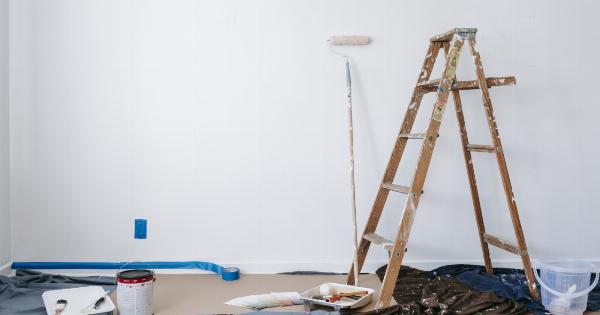Urinary bladder overactivity refers to a condition where the bladder muscles contract and relax excessively, causing an individual to urinate frequently and urgently.
This condition affects millions of people globally, and while it can be frustrating and uncomfortable, there are ways to manage the symptoms and improve your quality of life.
What are the Symptoms of Urinary Bladder Overactivity?
Urinary bladder overactivity manifests with various signs and symptoms that may include:.
- Urinating more than eight times a day
- Having to rush to the bathroom frequently
- Leaking urine before reaching the bathroom
- Waking up several times at night to urinate
- Feeling like your bladder isn’t entirely empty after urinating
What Causes Urinary Bladder Overactivity?
Several factors can contribute to urinary bladder overactivity, including:.
- Age
- Pregnancy and childbirth
- Menopause
- Neurological disorders, such as Parkinson’s disease and multiple sclerosis
- Infections
- Psychological stress
- Caffeine, alcohol, and certain medications
Tips to Manage Urinary Bladder Overactivity
Although urinary bladder overactivity can be challenging to manage, the following tips can help alleviate the symptoms:.
1. Kegel Exercises
Kegel exercises are a series of pelvic muscle exercises that help strengthen the muscles that control urination. Regular practice of Kegels can help improve bladder control and reduce the frequency and urgency of urination.
To perform Kegels, follow these steps:.
- Find the right muscles: Identify the muscles that you use to stop urinating midstream. Contract these muscles and hold for five seconds, then release them for five seconds.
- Repeat: Repeat these contractions ten to fifteen times per session and aim for three to four sessions every day.
2. Bladder Training
Bladder training is a technique that helps reduce the frequency of urination by forming a routine whereby an individual urinates on a fixed schedule and gradually increasing the time between urinations.
This technique trains the bladder to hold more urine and reduces the urgency to urinate. To train the bladder, follow these steps:.
- Create a schedule: Plan your bathroom breaks based on the frequency you currently urinate. For example, if you urinate every hour, make your bathroom breaks every hour and a half instead.
- Gradually increase the time: Increase the time between bathroom breaks by 15 minutes each week until you’re urinating every two to four hours.
3. Fluid Management
Drinking plenty of fluids can help to keep the bladder healthy and prevent urinary tract infections, but consuming too much fluid can worsen urinary bladder overactivity symptoms. To manage fluid intake, follow these tips:.
- Drink water when thirsty, but don’t force yourself to drink more fluids than you need.
- Avoid caffeine, alcohol, carbonated drinks, and acidic beverages.
- Reduce fluid intake after dinner to decrease nighttime urination.
4. Dietary Changes
Some foods and drinks can act as bladder irritants, causing overactivity symptoms to flare up. To reduce the impact of bladder irritants, try the following:.
- Avoid spicy foods and citrus fruits.
- Avoid artificial sweeteners, which can irritate the bladder.
- Limit foods and drinks that contain high amounts of acid, such as tomatoes and orange juice.
5. Manage Psychological Stress
Stress can exacerbate urinary bladder overactivity symptoms, and it’s essential to manage stress to keep symptoms under control. Here are some ways to cope with stress:.
- Practice relaxation techniques, such as deep breathing or meditation.
- Exercise regularly to reduce stress levels.
- Get enough sleep to manage stress and promote overall health.
When to See a Doctor
If you’re experiencing severe urinary bladder overactivity symptoms or are unable to manage them using the tips above, you should consult your doctor or a urologist.
Your doctor can recommend additional treatments, such as medication or physical therapy, to help you manage your symptoms.






























